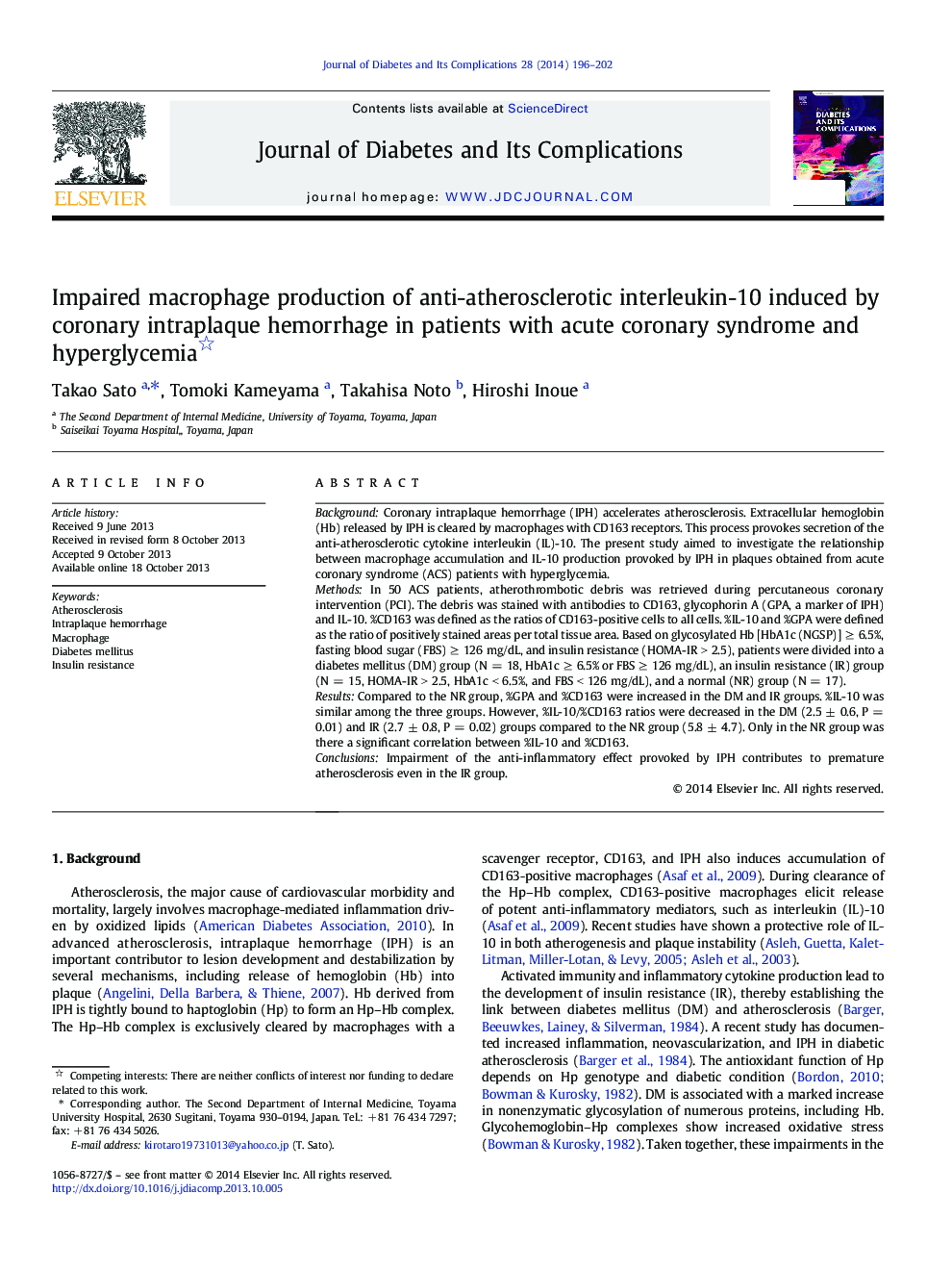| Article ID | Journal | Published Year | Pages | File Type |
|---|---|---|---|---|
| 2804299 | Journal of Diabetes and its Complications | 2014 | 7 Pages |
BackgroundCoronary intraplaque hemorrhage (IPH) accelerates atherosclerosis. Extracellular hemoglobin (Hb) released by IPH is cleared by macrophages with CD163 receptors. This process provokes secretion of the anti-atherosclerotic cytokine interleukin (IL)-10. The present study aimed to investigate the relationship between macrophage accumulation and IL-10 production provoked by IPH in plaques obtained from acute coronary syndrome (ACS) patients with hyperglycemia.MethodsIn 50 ACS patients, atherothrombotic debris was retrieved during percutaneous coronary intervention (PCI). The debris was stained with antibodies to CD163, glycophorin A (GPA, a marker of IPH) and IL-10. %CD163 was defined as the ratios of CD163-positive cells to all cells. %IL-10 and %GPA were defined as the ratio of positively stained areas per total tissue area. Based on glycosylated Hb [HbA1c (NGSP)] ≥ 6.5%, fasting blood sugar (FBS) ≥ 126 mg/dL, and insulin resistance (HOMA-IR > 2.5), patients were divided into a diabetes mellitus (DM) group (N = 18, HbA1c ≥ 6.5% or FBS ≥ 126 mg/dL), an insulin resistance (IR) group (N = 15, HOMA-IR > 2.5, HbA1c < 6.5%, and FBS < 126 mg/dL), and a normal (NR) group (N = 17).ResultsCompared to the NR group, %GPA and %CD163 were increased in the DM and IR groups. %IL-10 was similar among the three groups. However, %IL-10/%CD163 ratios were decreased in the DM (2.5 ± 0.6, P = 0.01) and IR (2.7 ± 0.8, P = 0.02) groups compared to the NR group (5.8 ± 4.7). Only in the NR group was there a significant correlation between %IL-10 and %CD163.ConclusionsImpairment of the anti-inflammatory effect provoked by IPH contributes to premature atherosclerosis even in the IR group.
